Steven Spielberg’s cinematic masterpiece Jurassic Park — based on the incredible novel of the same name by Michael Crichton — first brought dinosaurs to life on the big screen in 1993. Since then, there have been numerous sequels, games, toys, and even a Netflix animated series. The latest movie, Jurassic World: Dominion, barges into theaters on June 10th, 2022, bringing with it (hopefully) some of the most fearsome creatures we've seen yet. So far, the franchise has introduced audiences to nearly 30 different species of dinosaurs over the last three decades, and these are our picks for the top 10 coolest dinosaurs in the Jurassic Park (and Jurassic World!) series.
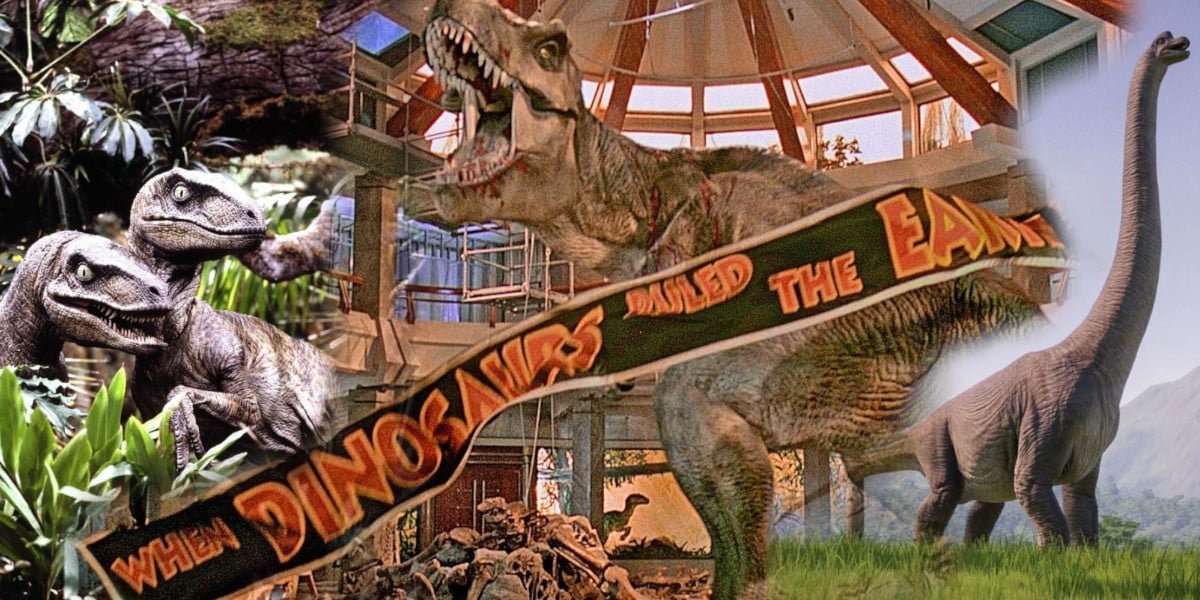
10. Brachiosaurus
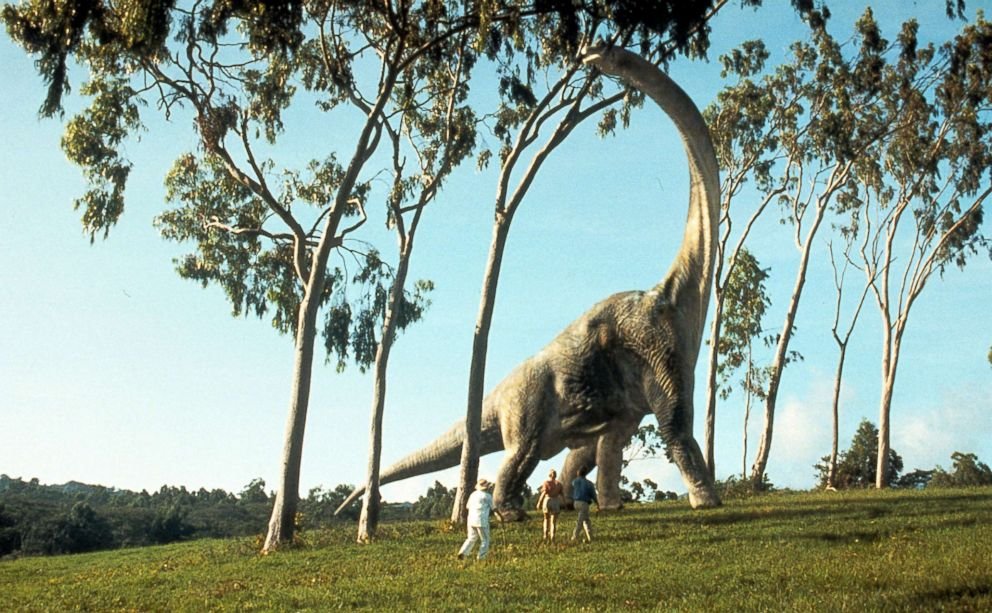
One of the most iconic shots from the original Jurassic Park was of course that first moment when paleontologists, Dr. Grant (Sam Neill) and Ellie Sattler (Laura Dern), arrive on Isla Nublar and first lay eyes on a real, non-extinct, dinosaur from the late-Jurassic period: the Brachiosaurus!
Often confused with the equally famous Brontosaurus, the Brachiosaurus was a sauropod with a more giraffe-like design, with its massive long neck. The Brachiosaurus of course was a herbivore, despite what 1933’s King Kong would have you believe, and was able to eat foliage from trees as high as 50 feet!
9. Stegosaurus
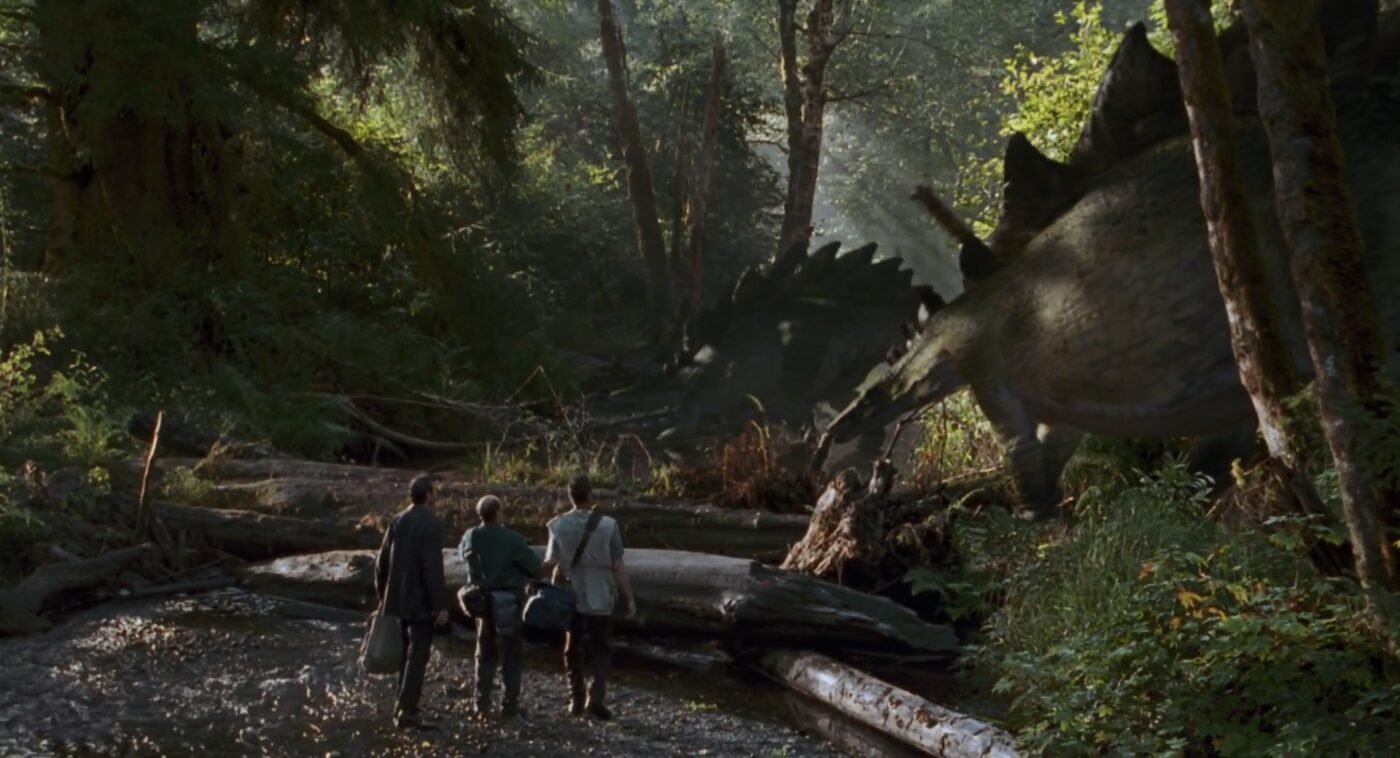
A herd of Stegosaurus is seen in The Lost World when Ian Malcolm (Jeff Goldblum) joins an expedition to Site B: Isla Sorna. In the movie, these dinos are shown to be very protective of their young. This giant herbivore could weigh as much as 5 tons and can be easily recognized by the distinct rows of plates along their back. Not to mention their spiked tails and tiny heads.
8. Ankylosaurus

In the Netflix series Camp Cretaceous, one of the kids trapped on Isla Nublar befriends a baby Ankylosaurus that he affectionately names “Bumpy.” The Ankylosaurus was an armored quadruped, protected from predators by a series of plates and spikes; it was basically a living tank!
7. Pteranodon

There are dozens of pterosaurs seen throughout the Jurassic Park series, but the most well-known of these is the Pteranodon. First appearing briefly at the end of The Lost World, they were a key part of Jurassic Park III — the characters are attacked by a group of Pteranodons in an abandoned aviary on the island. They were also featured prominently during the events of Jurassic World where they were seen attacking the park’s fleeing guests as chaos ensued.
These gigantic flying reptiles are estimated to have a wingspan as large as a school bus! While pterosaurs are prehistoric, they’re not technically dinosaurs. Still, they reigned from the late Triassic till the end of the Cretaceous period and vanished along with their dinosaur cousins. So while they're not technically “Jurassic,” either, they're still cool enough to land on our list.
6. Spinosaurus
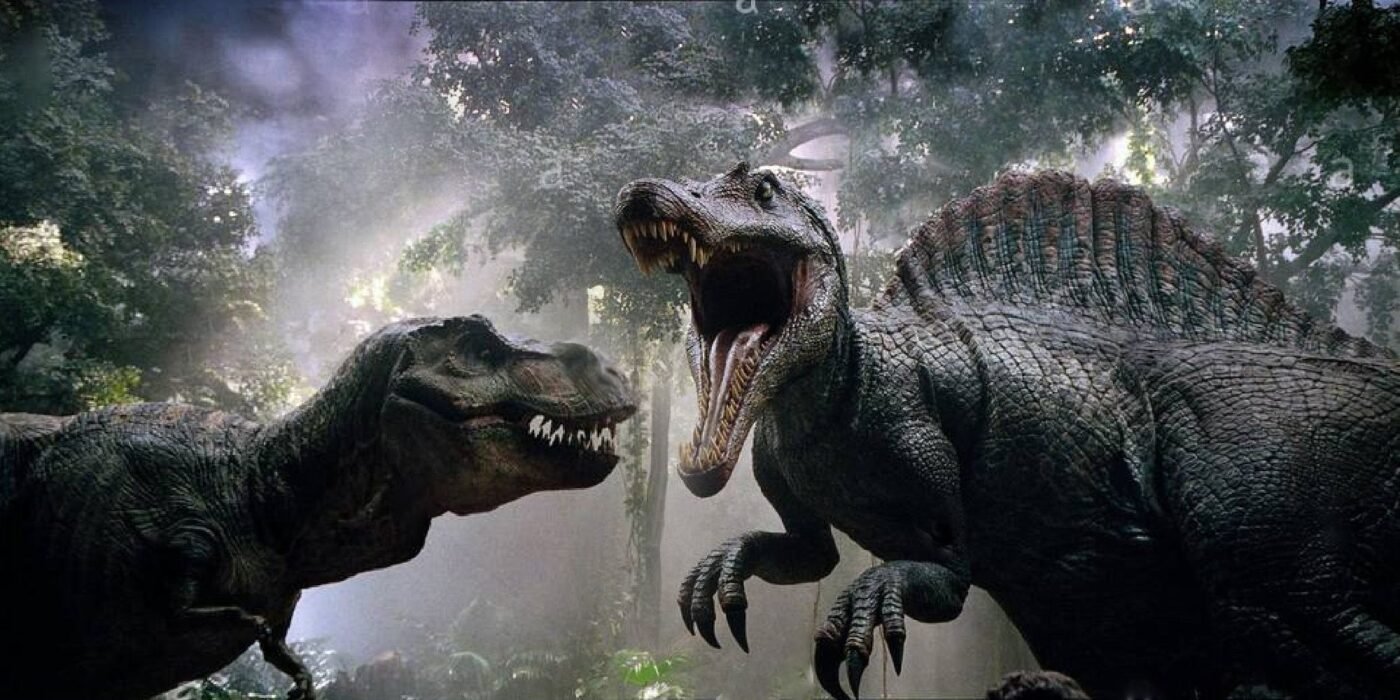
One of the most terrifying dinosaurs in the series, the Spinosaurus, debuted in Jurassic Park III as the main antagonist and aggressively hunted the party across the island. One of the largest carnivores of the prehistoric past, the Spinosaurus has been measured to be nearly 20 feet high and 37 feet long. (That's even larger than a T-Rex!)
Its most distinctive feature is a large fin along the back. Hooked claws resembled a bear's, and there are certainly a lot of characteristics in common with the modern crocodile. Scientists think that the Spinosaurus may have had webbed feet, allowing it to swim efficiently to hunt it’s prey. Easily a Top 10 dinosaur, right?
5. Triceratops
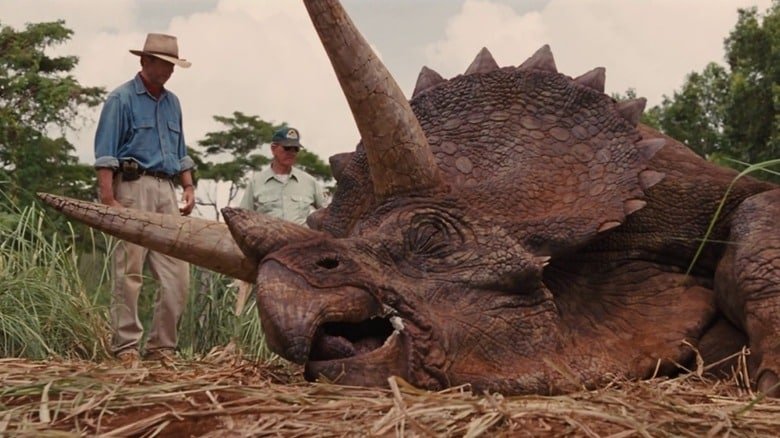
Another one of the most famous dinosaurs to appear in the movies is of course the majestic Triceratops! In one of the most memorable scenes from the original film, Alan, Ellie, and Ian come across a sick Triceratops on the tour, shortly before the storm arrives and everything falls apart. What makes this scene so great is just how convincing the practical effects are (even after 30 years). It really looks like they literally brought a dinosaur back to life!
The Triceratops was a rhino-like herbivore with an incredible defensive system: two large horns, a third horn over its beak, and a large frill to protect its neck from predators. These massive creatures could reach 30 feet in length and weigh as much as 13 tons. Triceratops fossils are actually the most common dinosaur fossils discovered.
4. Mosasaurus Maximus
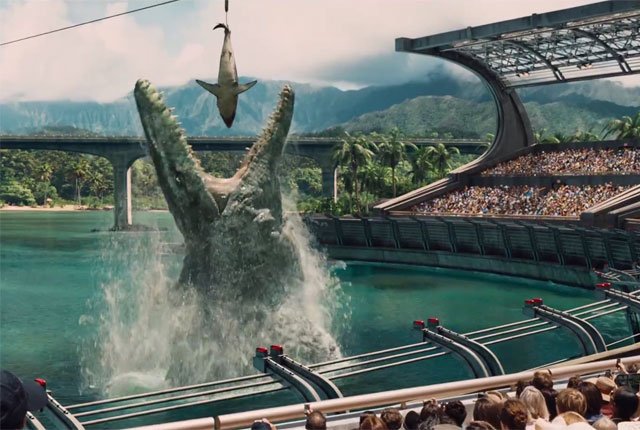
The Mosasaurus Maximus practically stole the show when it first made its appearance in Jurassic World as one of the main attractions in the new park. It later makes a surprise appearance at the end of the movie…making a big splash in the film's finale. (If you haven't seen it, you'll see what we mean when you do.) We see it again in Fallen Kingdom, where it escapes captivity into the Pacific Ocean. Yikes.
These aquatic carnivorous lizards existed during the late Cretaceous period. The largest known species of Mosasaurus was measured at 56 feet! Like the pterosaurs, the Mosasaurus was not technically a dinosaur, more closely related to modern snakes and lizards, but existed alongside them and also went extinct at the same time, so we’re gonna give them a pass here. We kind of have to…because just look at that thing!
3. Dilophosaurus
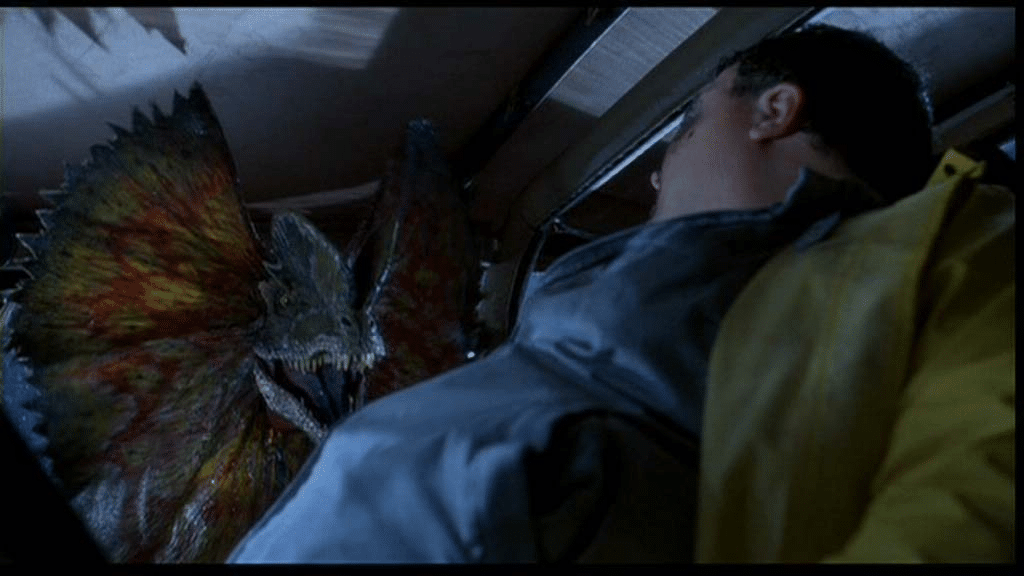
One of the most unique-looking dinos featured in the original Jurassic Park is the Dilophosaurus! Yup, the cute dino that kills Dennis Nedry (Wayne Knight) as he’s attempting to escape the island with the stolen embryos. It’s easily one of the most frightening deaths in the film.
While the frills and venomous acid spray are extremely cool, there’s no real evidence that either was a feature of the real species. They thrived during the early Jurassic period as one of the first large land carnivores, and the dino even had opposable thumbs. Rumor is that the Dilophosaurus is set to return in Jurassic World: Dominion, and we are there for it.
2. Velociraptor

At this point, Velociraptors are synonymous with the Jurassic Park series — appearing in every movie, book, game, and series as one of the most deadly and intelligent carnivores in the franchise. In the first movie, the raptors were shown to exhibit the ability to open doors and coordinate attacks. Raptors were later seen communicating in Jurassic Park III and only pursued the group because one of them had stolen their eggs from a nest.
In Jurassic World, Owen Grady (Chris Pratt) is a raptor trainer who forms a close bond with one named Blue. After saving Grady and Claire at the end of Fallen Kingdom, and escaping into the wild, Blue is set to reappear once again in Jurassic World: Dominion with a new family of her own!
Oddly enough, in real life, velociraptors were much smaller in size than portrayed in the films. They were larger than a turkey and presumably covered in feathers. The dinosaur most closely resembling the velociraptors in Jurassic Park was actually a related species, the Deinonychus!
Crichton knew this, but thought “velociraptor” sounded cooler. Wecan’t really blame him there. The term “velociraptor” actually means “swift robber,” which is fairly appropriate as they were one of the fastest dinosaurs, clocking in at around 25mph, with a sprint as fast as 40 mph!
While some of the dinosaur inaccuracies can be attributed to Steven Spielberg for a bit of Silver Screen Magic, the in-canon reason for the differences is that the cloned dinosaurs were genetically engineered with frog DNA to fill in the missing gaps in their recovered genomes. Because that's how science works. Right?
1. Tyrannosaurus Rex (T-Rex)
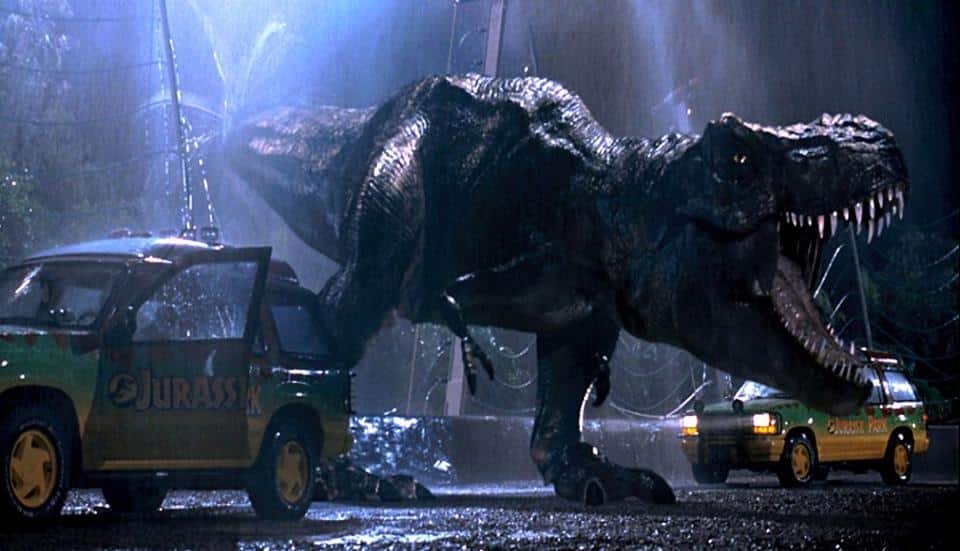
And of course, we have the Tyrannosaurus Rex. Perhaps the most recognizable dinosaur today, thanks in large part to the first Jurassic Park movie. Its name means “tyrant lizard king,” which is quite appropriate since the T-Rex was one of the largest and deadliest carnivores to ever walk the Earth. It was also one of the last carnivorous dinosaurs of the Cretaceous period that was wiped out from the K-T extinction event.
Like many dinosaurs, the Tyrannosaurus was an ancestor to many modern bird species, primarily the ostrich and chicken! However, unlike a modern chicken — at 13 feet tall, 40 feet long, weighing nearly 10 tons, and possessing a bite force of 35,000 newtons — the T-Rex was a force to be reckoned with!
The T-Rex is practically the mascot of the entire JP series. The logo is a T-Rex skeleton after all. In the first film, the T-Rex promptly escapes captivity when power goes out on the electric fences. It then proceeds to spend the rest of the movie eating lawyers and terrorizing our heroes. All before inadvertently saving the day when it swoops in to pick off the raptors for a quick bite.
We get to see a few more Rexes on Isla Sorna in the sequels, including a baby Rex and its overprotective parents (one of which escapes into San Diego to wreak havoc at the end of The Lost World), but the original T-Rex (affectionately referred to as “Rexy”) reappears in Jurassic World and teams up with Blue the raptor to battle the Indominus Rex in the movie’s climactic finale! She appears once again in Fallen Kingdom and was last seen at a zoo in northern California, after escaping the Lockwood Estate.
It remains to be seen where her current dominion will be in the new film.
Honorable Mentions
In Jurassic World: Dominion, we’re introduced to a new apex predator in the form of the Giganotosaurus! Unlike the mutant hybrids from the previous Jurassic World entries: the Indominus Rex, Scorpius Rex, and Indoraptor, the Giganotosaurus was in fact a real dinosaur first discovered in 1993 (the year the first Jurassic Park film debuted)! It’s one of the biggest carnivores to ever walk the Earth, handily outclassing the mighty (and beloved) T-Rex!
While we can't say this is a Top 10 Jurassic Park dinosaur yet, there's a good chance this one will be included on similar lists in the coming years.
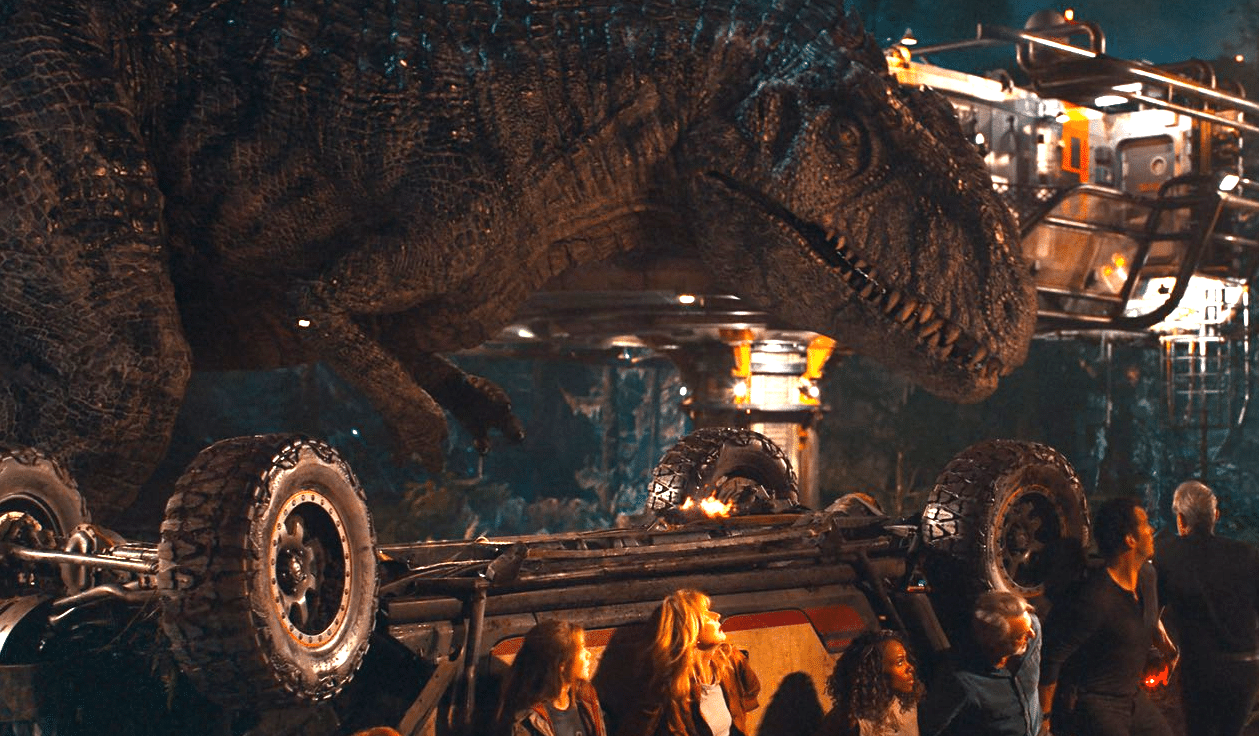
Of course, there are a dozen other amazing dinosaurs featured in the Jurassic Park franchise, including the Carnotaurus, Gallimimus, ‘Compies’ (Compsognathus), Allosaurus, Procompsognathus, and even Pachycephalosaurus to name a few.
Now we want to hear from you! Do you agree with our Top 10 dinos? Which ones did we miss from your list of favorite thunder lizards? Let us know in the comments below!
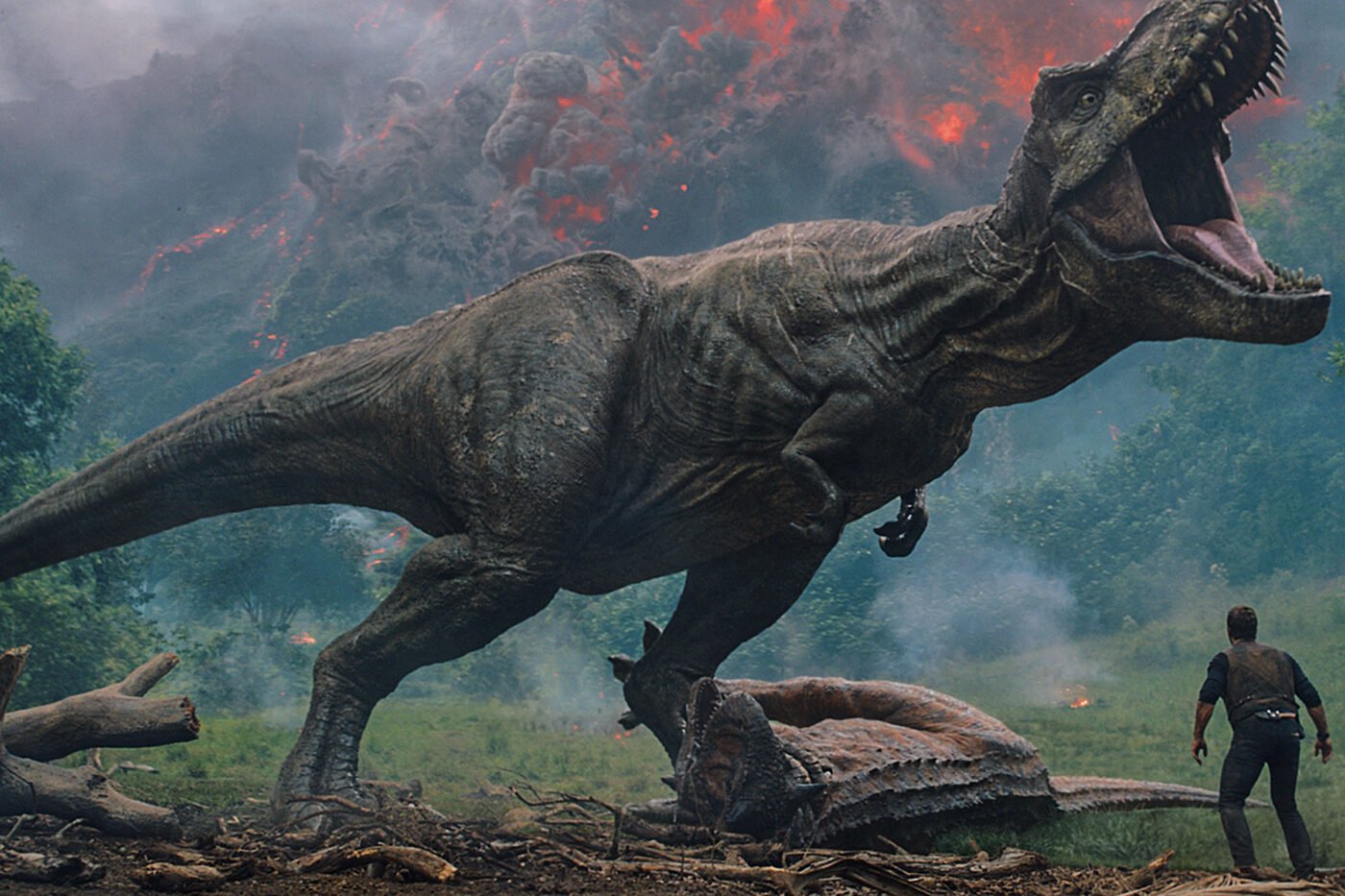
For a breakdown of each film in the Jurassic Park series, listen to Season 9 of Podcasters Assemble!
“Jurassic World: Dominion” stomps into theaters on June 10th, 2022!


[…] (Edited by Zack Derby, Intro / Outro by Dave Steele!) […]
[…] (Edited by Zack Derby, Intro / Outro by Dave Steele!) […]
[…] (Edited by Zack Derby, Intro / Outro by Dave Steele!) […]
[…] are often pretty inaccurate and hilarious. Heck, even Steven Spielberg’s masterpiece, “Jurassic Park” (1993), got A LOT of things wrong, mostly because we didn’t yet know that most dinosaurs had […]
[…] (Edited by Zack Derby, Intro / Outro by Dave Steele!) […]
[…] (Edited by Zack Derby, Intro / Outro by Dave Steele!) […]
[…] (Edited by Zack Derby, Intro / Outro by Dave Steele!) […]
[…] Reblogged from Geek to Geek Media! […]